Online Dental Trauma Guide: Part I Fracture Injuries
Root fractures
Root fractures
Fractures located in the root only, which may be horizontal or oblique from the long axis of the tooth.
Classification
Root fractures are classified according to the location of the fracture relative to the cemento-enamel junction and the level of the crestal bone.

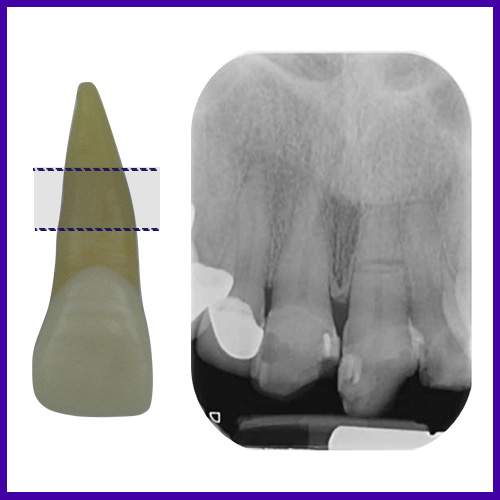
third root fracture of the UL1.
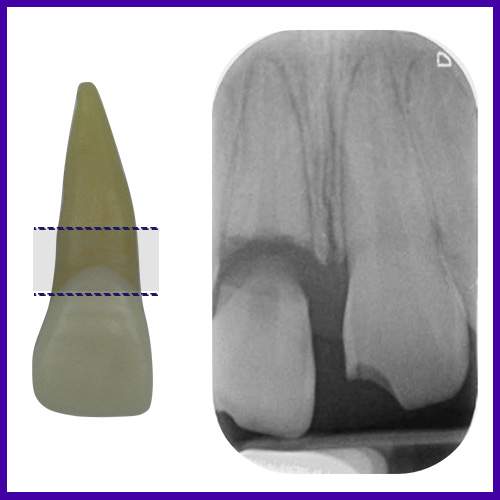
Clinical findings
Depending on the location of the root fracture the coronal fragment may:
Be mobile (with obvious displacement)
Present an occlusal interference
Demonstrate bleeding from the gingival crevice
Show transient discolouration of the crown (red or grey).
Radiographic findings
Findings on a radiograph are variable and dependent on the:
Type of fracture (horizontal or oblique)
Position of the fracture
Separation of the fragments
The direction of the x-ray beam.
The fracture will appear as a radiolucent line and thin lines in the absence of an occlusal interference often indicates no displacement of the coronal fragment. Obvious wider radiolucent lines, in the presence of an occlusal interference, is suggestive of extrusion of the coronal fragment.
Radiographic tip
If a root fracture is suspected but not clear on a periapical radiograph an upper occlusal view should be taken which due to the bisecting angle will likely show the root fracture more clearly (as seen in the images below).
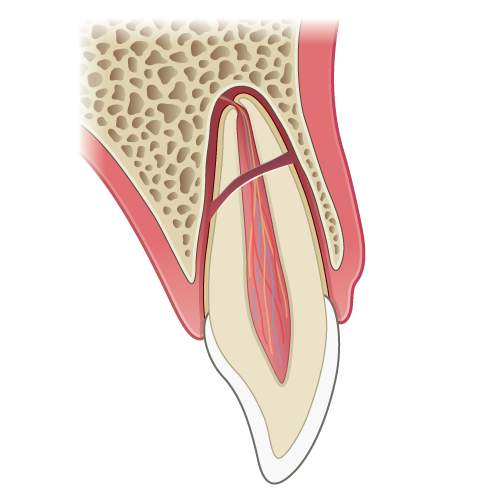
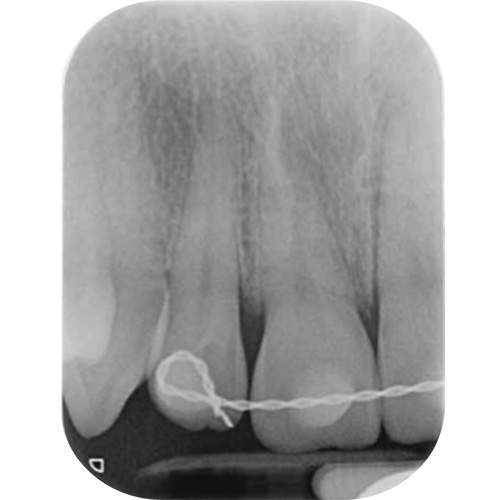
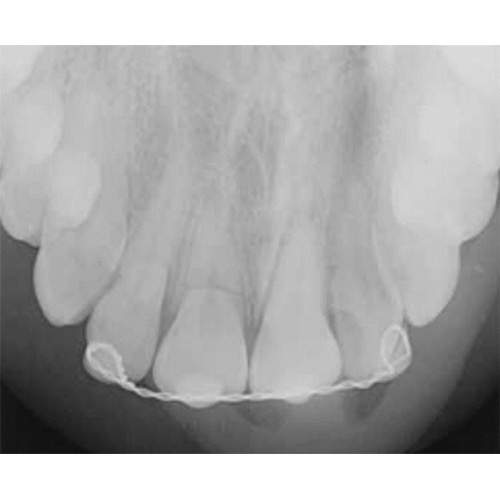
Management
Management of primary teeth
Management is dependent on the stability and degree of displacement of the coronal fragment
If the coronal fragment is firm and not displaced: careful monitoring is indicated
If the coronal fragment is displaced or mobile the coronal fragment should be extracted and the remaining apical fragment left to be resorbed by the developing successor.
Management of permanent teeth
If the coronal fragment is displaced, it should be digitally repositioned using a watch winding motion with pressure in an apical direction under local anaesthesia
Splint the fragment in position using Triad™ (DENTSPLY) or a roll of composite on the incisal edges
Take a radiograph to confirm accurate repositioning
If repositioning of the coronal fragment is accurate, the temporary splint should be left in situ whilst the tooth is splinted to the adjacent teeth.
Splinting
Is it necessary?
Yes splinting is necessary for all cases of root fracture although the duration and type of splint is dependent on the location of the fracture line.
Splinting time
Apical and middle third root fractures require – flexible splinting for 4 weeks.
Cervical third root fractures require – rigid splinting for 4 months.
What materials to use?
Apical and middle third root fractures – flexible splint with 0.016″ stainless steel wire.
Cervical root fractures – have the poorest prognosis.
If splinting is attempted rectangular stainless steel wire (0.025″) should be used to act as a rigid splint.
Monitoring: For apical and middle third root fractures remove the splint at 4 weeks, then review at 3, 6 and 12 months and then yearly for 5 years.




